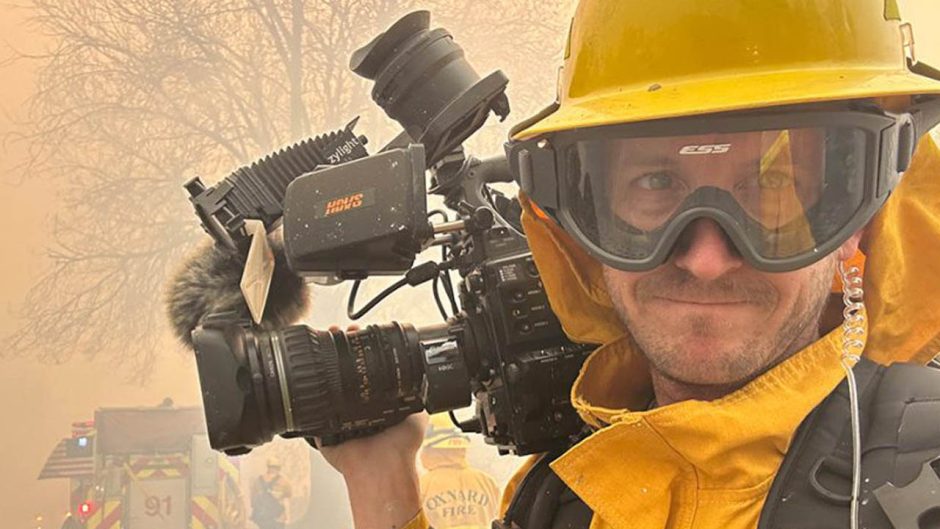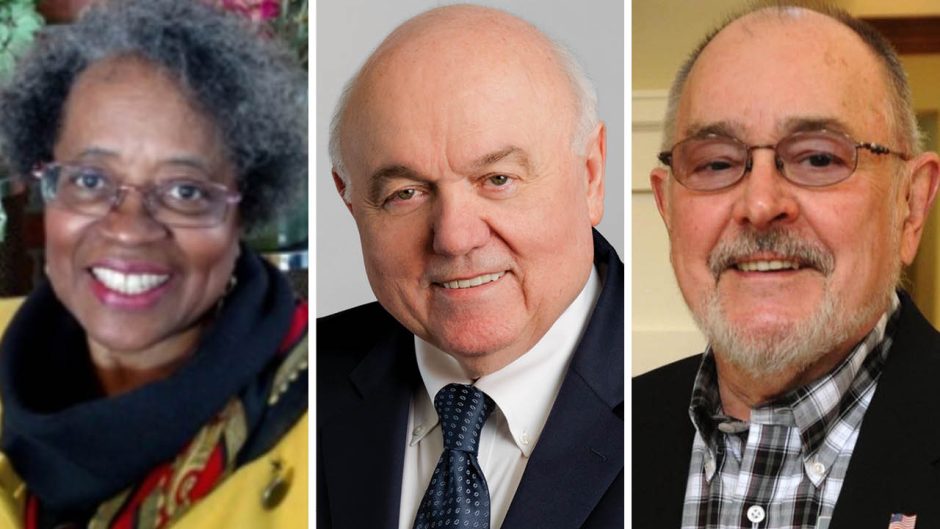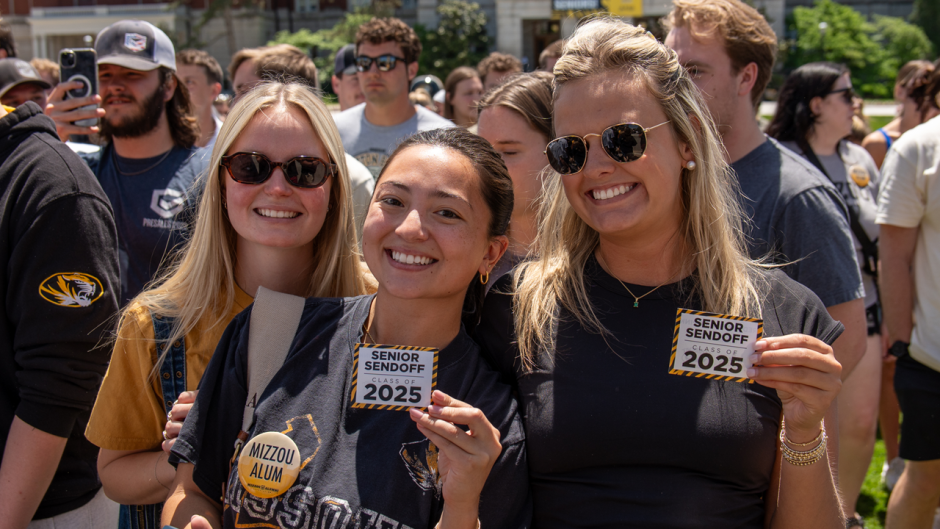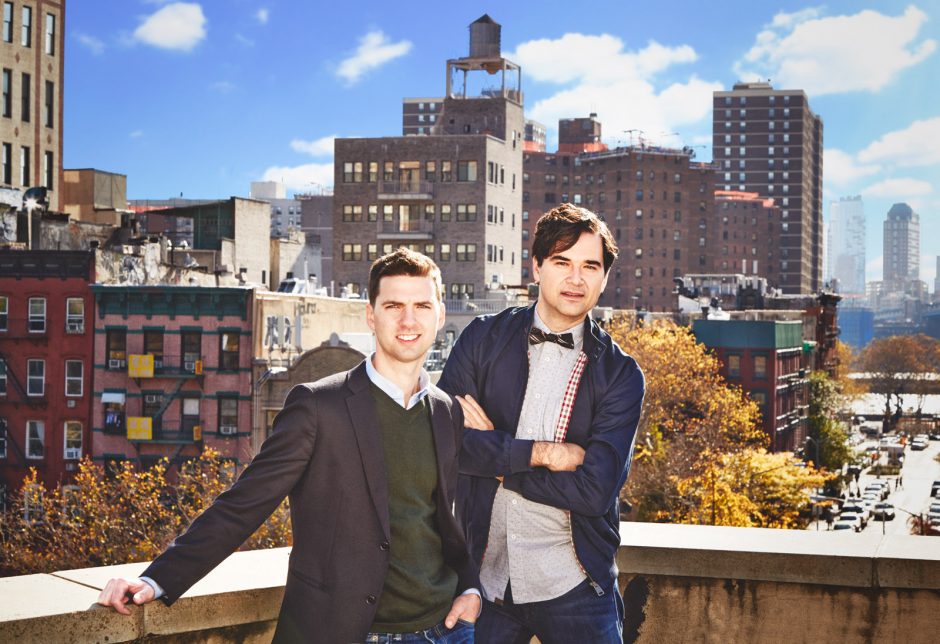
Tom Meyers, left, and Greg Young, BJ '93, host the popular podcast The Bowery Boys.
It all started with a cheap plastic karaoke microphone in the closet. Nine years later, Greg Young quit his job and became a full-time podcaster. Young, with his friend Tom Meyers, hosts The Bowery Boys, a popular podcast about New York City history that garners about 100,000 listeners per episode and has spawned a book.
In 1993, Young moved to New York immediately after graduating from Mizzou, with a bachelor’s degree in journalism and a minor in history. But his dreams about making it big in the Big Apple as a magazine writer “fell by the wayside” when the reality of paying the bills pushed him into a music industry job. But he still took freelance writing assignments as often as he could and continued to cultivate his love of history.
“I wanted to go back [to school for] history,” he says, but he was already working two jobs just to get by. “So I created my own education over the years. I focused my reading and travel around American history.”
By 2007, he had zeroed in on local New York history. “With every fact I learned about New York, the city got a tiny bit more livable,” he says. “The block I lived on, once I found out who had lived on the block and the history of it, the more bearable it was to pay the absurdly high rent.”
If his learning was enriching his own New York experience, he wondered if it would do the same for others.
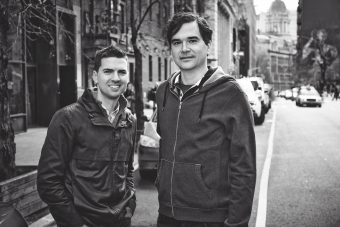
Tom Meyers and Greg Young on the streets of New York.
Young and Meyers have been friends for a long time. They met through Meyers’ older sister, Elizabeth Meyers Hendrickson, BJ ’94, MA ’05, PhD ’08, when Young was in college. One day, when the two were hanging out in Meyers’ New York apartment, Young mentioned that there was a free audio program on the computer called Garage Band and a free broadcasting medium called podcasts. Meyers was interested. They decided to do a show together. The concept? Helping people understand local history so they could appreciate their neighborhoods more.
“The first episode was the history of this street that was right outside Tom’s apartment, Canal Street,” Young remembers. “It was very short. There were probably five facts in it.”
Their recording equipment was the aforementioned karaoke microphone plugged directly into a laptop. “It was super low-fi to say the least. As low-budget as you could possibly go.”
And yet, it caught on.
About 50 people listened to those first episodes. A few episodes in, iTunes started promoting the podcast, and 50 people turned into 500.
Eventually they mastered the production basics and started to incorporate greater audio flourishes, tighter pacing and a more polished presentation. But that took extra time. Where once they took one hour to cut, edit and post an episode, now they take two days — and that’s after spending two or three days on research before they start recording.
Young was committed to the podcast and committed to doing it at a high level of quality, but he was also committed to a full-time job, and he was running out of hours in the day.
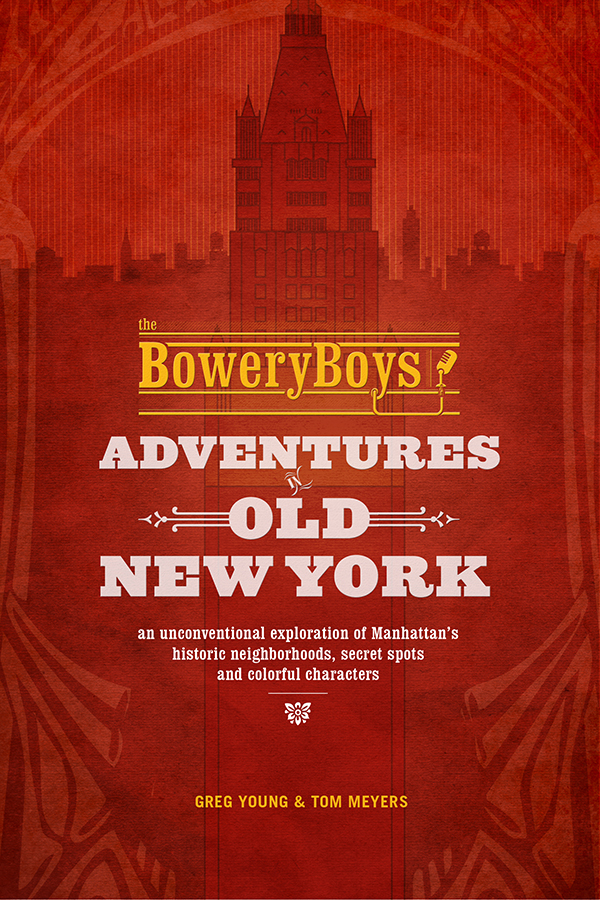
The Bowery Boys: Adventures in Old New York , published in June 2016, is billed as a "treasure map to an alternative metropolis."
Then they were offered a book deal.
“2015 was a nightmare year,” Young says of the workload. While working their day jobs and producing a biweekly show, the pair also wrote a 528-page book, The Bowery Boys: Adventures in Old New York: An Unconventional Exploration of Manhattan’s Historic Neighborhoods, Secret Spots and Colorful Characters. “Looking back, it was the year I was able to change my life and change my career.”
In the years Young and Meyers were building their podcast, an industry was developing around them. Young had always run a companion Bowery Boys blog online that had brought in some ad money, but ad sales on the podcast itself only took off in the past couple years, roughly corresponding to when the hit show Serial brought the medium to a wider audience.
The book brought them even more exposure and popularity. “It brought the show up to another level,” Young says. “We could all look at it and say, ‘It’s time to jump off the big corporate job.’ ”
July 1, 2016, was his last day in the music industry. Now that his time is his own, he has gone on a book tour and developed a new podcast, which launched in November, called The First. It tells the surprising human stories behind iconic inventions.
Young's Mizzou training has served him well in his career. The J-School’s magazine track was certainly helpful, but working at The Maneater during his entire Mizzou tenure was also invaluable. “All the nitty-gritty of working on a publication, from the deadlines to copy editing to how you assign things, come into play” in the podcast, he says. “Even though we don’t have a newsroom, we always 'go to press' 8 p.m. on Thursday, no matter what.”
The podcast, in turn, has kept him connected to journalism and, more so than any print publication he’s ever written for, to his public.
That has been the most “fun and startling” thing he’s learned since he first held that karaoke microphone.
“There’s a special connection” to the listener, Young says. In person or by email, they tell him how his podcast is part of their daily commute, their house renovation work, their marathon training. Bowery Boys has even been played during childbirth. “You really enter into someone else’s brain, and you become a friend to them. They feel like they know you. It’s far more than about being a historian or teacher.”


